Not Our Choice: A Comic on a Big Decision for a Tiny Person


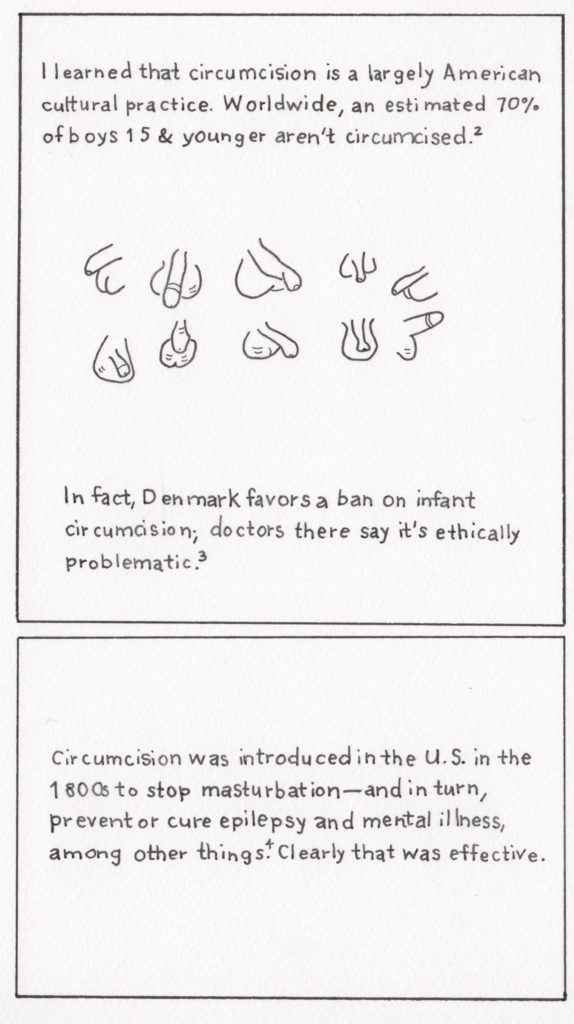

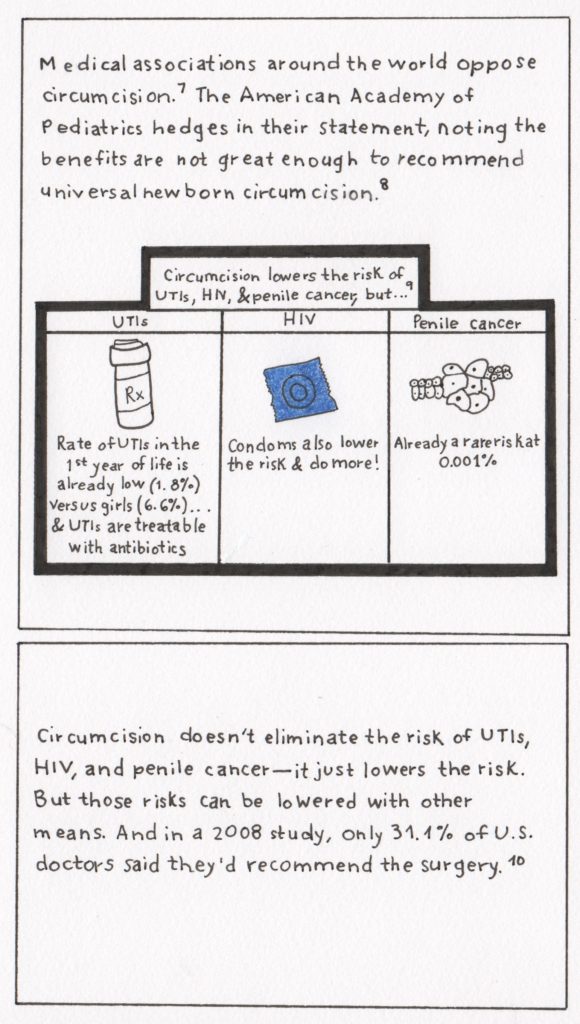

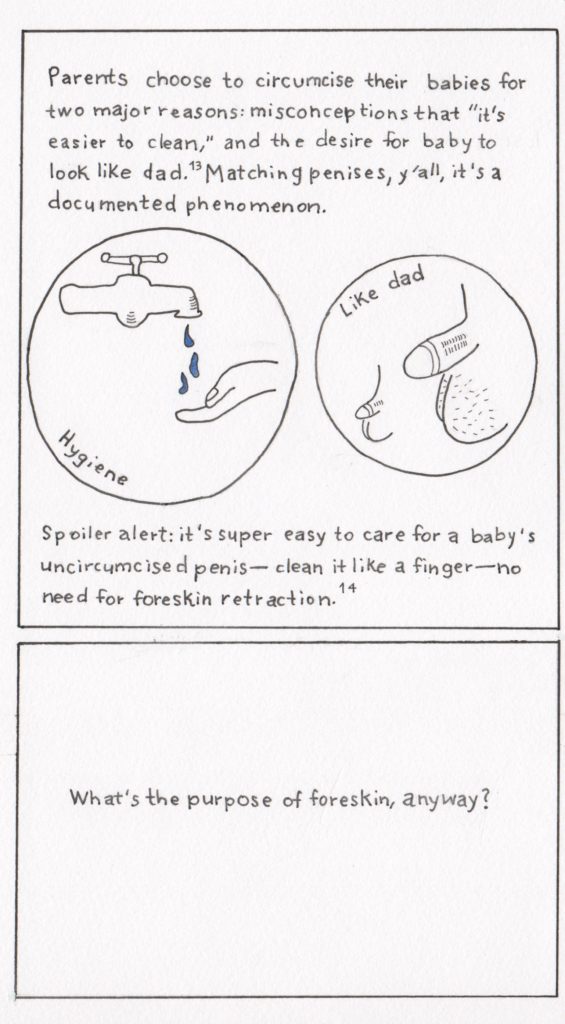



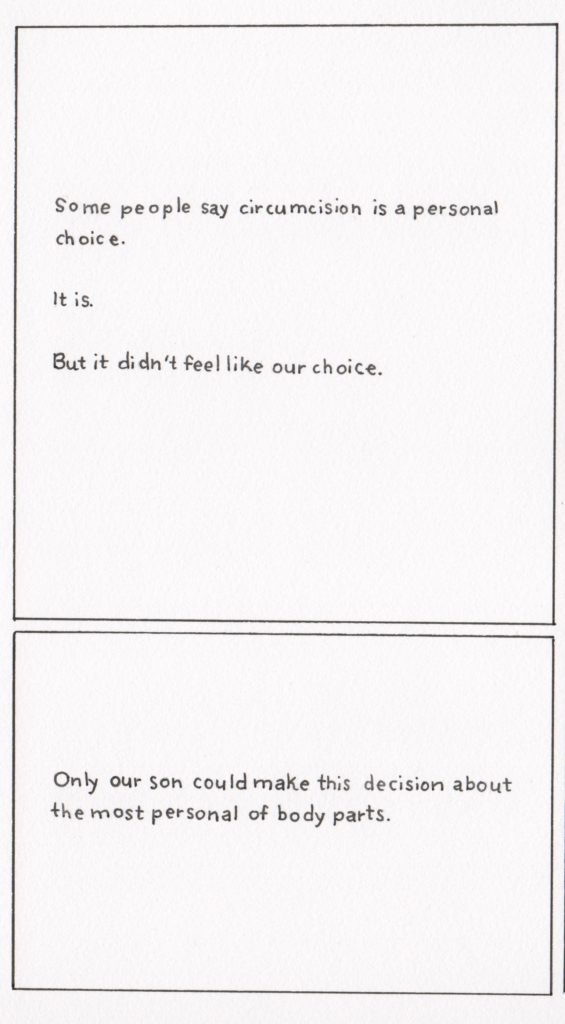
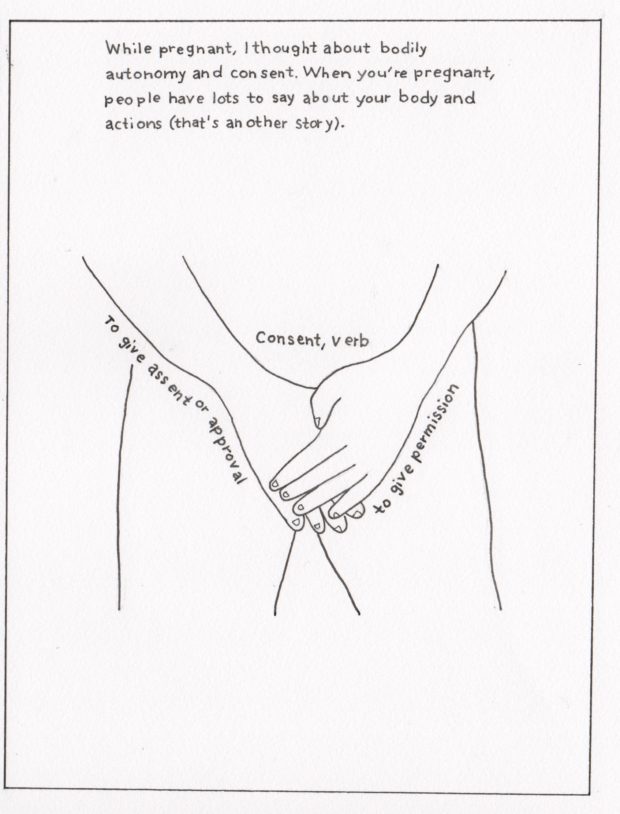


How do two moms make a decision about the most personal of their son’s body parts? A comic about consent, culture, and choices.
Photo credit: Andrea K. Jones
Footnotes and Citations
1 People are embracing other rituals to welcome babies into their faiths, described for example, in the New York Times (July 2017): https://www.nytimes.com/2017/07/25/well/family/cutting-out-the-bris.html?emc=edit_tnt_20170725&nlid=63450943&tntemail0=y&_r=1
2 Worldwide estimates of circumcision: World Health Organization, 2007. Male circumcision: global trends and determinants of prevalence, safety and acceptability. http://www.unaids.org/sites/default/files/media_asset/jc1360_male_circumcision_en_0.pdf
3 McCann, Erin (2013) Danish Doctors’ Group Wants to End Circumcision for Boys. The New York Times. https://www.nytimes.com/2016/12/08/world/europe/circumcision-boys-babies.html
4 Svoboda, J. Steven (2013) Circumcision of male infants as a human rights violation. Journal of Medical Ethics 39: 469-474.
A brief historical overview about why rates declined: Rates of routine infant circumcision started to decline in other countries in the early part of the 20th century. For example, in the U.K. during the 1930s, the medical community reevaluated whether circumcision was medically beneficial. As a result, the National Health Service stopped covering routine circumcision. Rates rapidly declined, from 33-40% in the 1930s to 20% in 1949—and plummeted further over the next decade. Britain’s first wave of the natural childbirth movement, from 1933-1960, also contributed to the decline. Later in the 20th century, rates fell in Canada after national health care declined to cover the procedure.
Carpenter, L.M. (2010) On remedicalisation: male circumcision in the United States and Great Britain. Sociology of Health and Illness 32(4): 613-630. http://onlinelibrary.wiley.com/doi/10.1111/j.1467-9566.2009.01233.x/full#b50
5 Rabin, Roni C. (2010) Steep Drop Seen in Circumcisions in U.S. The New York Times. http://www.nytimes.com/2010/08/17/health/research/17circ.html
6 Ingraham, Christopher (2015) Americans truly are exceptional— at least when it comes to circumcision. The Washington Post. https://www.washingtonpost.com/news/wonk/wp/2015/05/26/americans-truly-are-exceptional-at-least-when-it-comes-to-circumcision/?utm_term=.ebe322d2ea32
7 Medical associations around the world oppose circumcision because it involves risks, inflicts pain, and violates the right to consent, in order to remove a functional body part, as described in: Frisch, Morten, et al. (2013) Cultural Bias in the AAP’s 2012 Technical Report and Policy Statement on Male Circumcision. Pediatrics 131(4): 796-800. http://pediatrics.aappublications.org/content/pediatrics/early/2013/03/12/peds.2012-2896.full.pdf
8 American Academy of Pediatrics statement on newborn male circumcision https://www.aap.org/en-us/about-the-aap/aap-press-room/pages/newborn-male-circumcision.aspx
9 Lerman, S.E. & J.C. Liao (2001) Neonatal circumcision. Pediatric Clinics of North America 48(6): 1539-57. And: MacNeily, Andrew E. (2007) Routine circumcision: the opposing view. Canadian Urological Association Journal 1(4): 395-397. https://www.ncbi.nlm.nih.gov/pmc/articles/PMC2422979/
10 Matar, L. et al. (2014) Medical risks and benefits of newborn male circumcision in the United States. Journal of the International Association of Providers of AIDS Care. 14(1): 33-39.
11 Weiss, H.A., et al. (2010) Complications of circumcision in male neonates, infants and children: a systematic review. BMC Urology 10:2. And: Krill, Aaron J., et al. (2011) Complications of circumcision. Scientific World Journal 11: 2458-2468. https://www.ncbi.nlm.nih.gov/pmc/articles/PMC3253617/
12 El Bcheraoui, C. et al. (2014) Rates of adverse events associated with male circumcision in U.S. medical settings, 2001-2010. JAMA Pediatrics 168(7): 625-634.
13 Rediger, C. & A.J. Muller (2013) Parents’ rationale for male circumcision. Canadian Family Physician 59(2) e110-e115. And: Mitchell, T. & C. Beal (2015) Shared decision making for routine infant circumcision: a pilot study. Journal of Perinatal Education 24(3): 188-200.
14 How to care for your baby’s penis, as described by the American Academy of Pediatrics: https://www.healthychildren.org/English/ages-stages/baby/bathing-skin-care/Pages/Care-for-an-Uncircumcised-Penis.aspx
15 And, women have foreskin, too, which covers their clitoris. The most common type of female genital mutilation partially or completely removes the clitoris and/or this foreskin (2010, Human Rights Watch, https://www.hrw.org/news/2010/06/16/qa-female-genital-mutilation).
16 Darby, R. Risks, benefits, complications and harms: neglected factors in the current debate on non-therapeutic circumcision. Kennedy Institute of Ethics Journal 25(1): 1-34.
17 Foreskin area measurement from data within (converted from the metric system) Kigozi, Godfrey (2011) Foreskin surface area and HIV acquisition in Rakai, Uganda (size matters) AIDS 23(16) 2209-2213. https://www.ncbi.nlm.nih.gov/pmc/articles/PMC3125976/






Pingback: 01/26/2018 – Comics Workbook
Pingback: This Week in Graphic Medicine (2/2/18) | Graphic Medicine
Pingback: Love and RAGE: MUTHA's Most Popular Posts of 2018 - Mutha Magazine
Pingback: This Week in Graphic Medicine (1/11/19) | Graphic Medicine